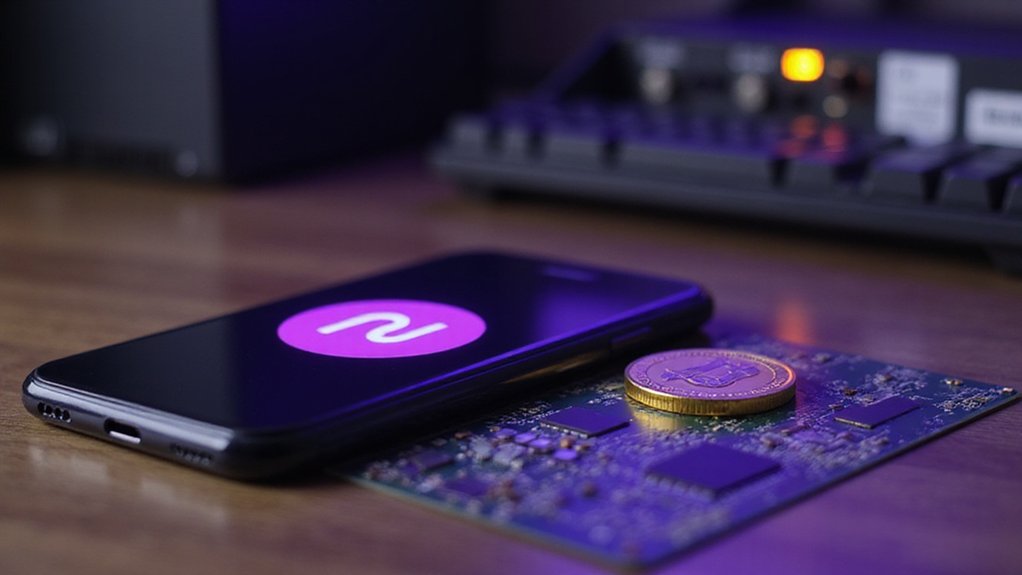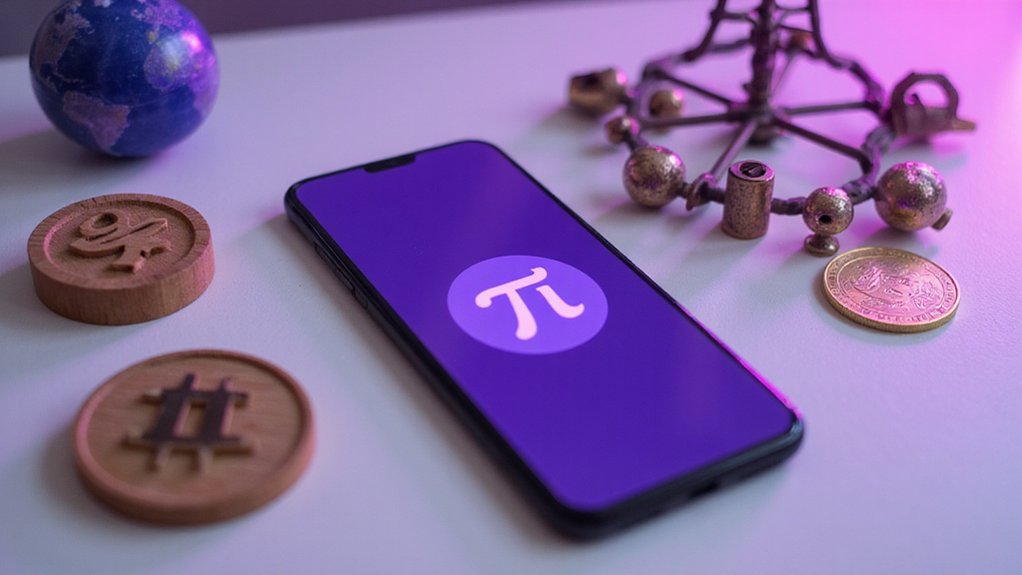Pi Network, launched on March 14, 2019 by Stanford graduates, is a mobile-based cryptocurrency mining venture that circumvents the energy-intensive protocols of traditional cryptocurrencies. Users “mine” tokens through daily app interactions using a Stellar-inspired consensus algorithm, requiring minimal battery consumption. The invitation-only ecosystem assigns various roles—miners, contributors, nodes—creating a controlled growth environment. Despite amassing millions of users, Pi’s requirement for KYC verification and its referral structure continue to spark debates about its ultimate legitimacy in cryptocurrency circles.

The ambitious cryptocurrency venture known as Pi Network has emerged as an intriguing entrant in the crowded digital currency landscape, differentiating itself through smartphone-based mining that requires neither specialized hardware nor significant technical expertise. Launched on Pi Day (March 14, 2019) by Stanford graduates Nicolas Kokkalis and Chengdiao Fan, the project has cultivated tens of millions of users drawn to its promise of democratizing cryptocurrency participation—a proposition that warrants examination in an ecosystem where barriers to entry typically include prohibitive equipment costs and technical knowledge.
Pi Network reimagines cryptocurrency access through smartphone mining—a Stanford-born initiative bypassing traditional barriers of cost and technical complexity.
Pi’s mining mechanism operates via a daily activation button tap within the mobile application, utilizing an algorithm inspired by the Stellar Consensus Protocol rather than Bitcoin’s energy-intensive proof-of-work model. This approach—supposedly minimizing battery consumption and data usage—enables users to participate in cryptocurrency mining during their quotidian smartphone interactions without the traditional associated costs¹. Unlike Bitcoin mining on Android phones, which offers minimal rewards and can damage devices through excessive battery drain, Pi Network claims to be more efficient for mobile users. The network establishes a trinity of roles: Miners who earn tokens through daily engagement, Contributors who enhance security by building trusted circles, and Nodes validating transactions to maintain blockchain integrity. New members can only join the Pi Network through an invitation code from an existing trusted member, creating a controlled growth mechanism for the community.
The platform’s accessibility extends beyond its hardware requirements to its user experience design, with straightforward interfaces and educational resources intended to demystify blockchain concepts for the uninitiated. Yet this simplicity belies a sophisticated security architecture requiring Know Your Customer verification—including government ID submission and biometric checks—for mainnet migration, a process that has generated both anticipation and skepticism among participants. The network implements a crowd-scaled KYC solution to verify users’ identities while maintaining the platform’s commitment to broad accessibility.
Central to Pi Network’s ethos is community development as the bedrock of its Web3 ecosystem. This social networking component, while fostering engagement, has attracted criticism for its referral-based growth incentives that some observers have noted bear uncomfortable resemblances to multilevel marketing structures. Whether Pi Network ultimately represents a genuine innovation in cryptocurrency accessibility or merely a clever repackaging of familiar incentive structures remains an open question as the project continues its evolution toward mainstream cryptocurrency legitimacy.
¹Though one might question whether “free” mining truly exists in any meaningful economic sense.
Frequently Asked Questions
When Will Pi Network Be Listed on Cryptocurrency Exchanges?
Pi Network’s exchange listing timeline remains indeterminate as of early 2025, contingent upon completing several critical milestones.
The project must first achieve full mainnet deployment, complete KYC verification for its user base, and establish decentralized node infrastructure running the Stellar Consensus Protocol.
While developers have prioritized ecosystem development over market exposure, official listings will likely materialize only after these technical prerequisites are satisfied—a fact that continues to test the patience of its community members.
How Much Will One Pi Coin Be Worth?
The precise value of a Pi coin remains speculative, as the cryptocurrency hasn’t established official market pricing during its pre-mainnet phase.
Estimates range from cents to several dollars—a rather wide spectrum that reflects the uncertain nature of crypto valuation.
Pi’s ultimate worth hinges on multiple variables: user adoption scale, ecosystem utility development, successful KYC completion, and competition within established cryptocurrency markets.
Without exchange listing or widespread commercial applications, any current valuation basically amounts to educated guesswork.
Is Pi Network a Legitimate Cryptocurrency or a Scam?
Pi Network occupies a peculiar middle ground in the cryptocurrency landscape.
While not an outright scam (no upfront investment required, transparent development team), it’s not yet a fully-realized cryptocurrency either.
Its referral-heavy growth model raises pyramid-scheme-like concerns, yet its Stanford pedigree and technological groundwork suggest legitimate intentions.
The ultimate verdict hinges on whether the promised mainnet materializes with actual utility—something the crypto community awaits with a blend of skepticism and curiosity.
How Can I Withdraw or Cash Out Pi Coins?
Withdrawing Pi coins requires completing several prerequisite steps that remain partially theoretical.
Users must first migrate their coins to the mainnet—a process contingent upon passing KYC verification with government ID and liveness checks.
The actual cash-out mechanism remains conspicuously underdeveloped, as Pi Network has yet to implement definitive withdrawal functionality.
This absence of concrete exit pathways (while users continue “mining”) might give the financially prudent observer reason to raise an eyebrow.
What Makes Pi Network Different From Other Cryptocurrency Projects?
Pi Network distinguishes itself through four key innovations: mobile-friendly mining that eliminates expensive hardware requirements, the Stellar Consensus Protocol that consumes minimal energy compared to traditional Proof-of-Work systems, a community-driven ecosystem with specialized user roles, and an inclusion-focused approach targeting cryptocurrency newcomers.
This architecture—deliberately crafted for accessibility—stands in stark contrast to conventional cryptocurrencies’ technical barriers, enabling participation via simple daily app engagement rather than resource-intensive mining operations.









